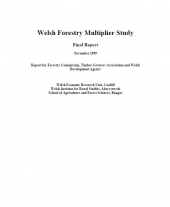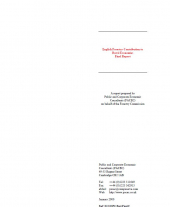Assessing the Investment Returns from Timber and Carbon in Woodland Creation Projects: Research Note

The voluntary carbon market for new woodlands has been growing in recent years. This research note examines the impacts of carbon credit sales on the financial returns to planting woodland. It applies investment appraisal techniques to estimate the financial viability of woodland creation for five different woodland types – taking account of both carbon and timber receipts - and examines the implications for rotation lengths.
The traditional income source from woodlands is timber. In recent years a voluntary carbon market has been established. In this market, firms will pay landowners for creating woodlands to sequester carbon. This presents landowners with a potentially significant source of additional income.
This Note uses investment appraisal techniques to estimate the financial viability of woodland creation for five different woodland types, presenting the results as net present values (NPVs) per hectare. It then uses a sensitivity analysis to see how these values are affected by varying factors such as carbon prices, discount rates, yield class, whether third parties are involved in project development, and rotation length.
Although details are not given in this Note, landowners also need to be aware that rising woodfuel demand has increased timber prices at the lower end of the price–size curve. Woodlands can also provide a wide range of other services, which are typically not bought and sold in markets but are highly valued by society.
File Name
FCRN031a.pdf
Category
File Size
367.03 KB
File Type
application/pdf
Version
2


